
This article was first published on bookworks.co.uk, a hub for indie authors run by Publishers Weekly. Unfortunately, the site has now closed so I’m republishing my guide to bookstagram for indie authors here.
If you’re a self-published author trying to get the word out about your work, you need to be on bookstagram.
If you haven’t heard of bookstagram already, sit down and buckle up, you’re about to get acquainted. This is a beginner’s guide to bookstagram for indie authors.
I’ve split this guide into two sections: how to start a book Instagram and bookstagram strategy.
The first half discusses how to properly set up your author Instagram and what key things your profile needs.
The second half is for authors who are up and running and want tips on how to make the most of bookstagram.
What is bookstagram?
Bookstagram is a community of book lovers on Instagram. “Bookstagrammers” (book-instagrammers) create aesthetically pleasing photos of their current reads, new releases and more to share with their followers.
If you’ve brushed aside the thought of joining Instagram, thinking that it’s a superficial platform suited to fashion and foodie types, then think again.
Instagram is one of the most powerful marketing tools in today’s world and marketing departments across the globe are allocating more and more of their budget to Instagram marketing with each passing month.
Whilst it’s easy to see how a fashion brand might be able to harness the power of Instagram’s visual nature, it is also an essential tool for any author trying to market their book.
Especially if your book is geared towards a younger demographic.
The hashtag #bookstagram now has over a whopping 38 million posts and this number is rapidly growing. Thanks to these aesthetically pleasing bookish squares, physical copies have managed to defeat the threat of e-books and millennial book buying is on the rise.
Pictures of beautiful books on Instagram are completely changing the publishing industry and authors need to hop on the trend ASAP if you have not already done so.
Now you might be thinking, “never judge a book by its cover”. You need to throw the phrase never judge a book by its cover out the window right now. On bookstagram, it’s all about the cover.
That’s not to say that the content doesn’t matter because, of course, it does.
It’s just that if you want to market your book on Instagram it’s going to be a million times easier if the cover is something pretty to look at.
Definitely something worth bearing in mind when creating your book. That’s just the way the world works!
Now let’s get started with Instagram.
How to Start a Book Instagram
Download the app
Instagram is a mobile phone app thus at the moment the only way to publish a photo to Instagram is via your phone.
Whilst you can view, like and comment on anyone’s account via the instagram.com website, you can only upload your own content via a mobile device.
As such, you’ll need to download the app to your smartphone. Instagram is available via the App Store for iPhones or via Google Play for Android devices.
Set up an account
First things first, you’re going to need to set up an author Instagram account.
If you’ve already got a personal account and you’re thinking you can just use that to promote your book, then scrap that thought immediately.
Your account needs to be professional from the get-go and that means no memes or pictures of your cat doing something funny.
To set up an account, all you need is a valid phone number or email address. Then enter your name, set up a safe password and a username will be chosen for you.
It’s likely this username will be along the lines of ja.ne.doe so you’ll want to change that immediately to something that’s easier for people to remember.
Choose a username
Choosing a good username is essential as this is how your followers will come to recognise you.
You can change your username at any point on Instagram, but this isn’t advisable as once you’ve built up a following with one name, it can be difficult for people to find you in the future if you then change it.
For an author, this part should be pretty simple though. Just choose your pen name!
It could simply be your name, your name + official, your name + author, or something else along those lines. Here are some username examples from four successful authors who use Instagram:
@tahereh
@jojomoyesofficial
@marissameyerauthor
@authorbethreekles
Write a great bio
Next thing you’ll have to do is write yourself a great bio, so people know what your page is all about. Your bio is the first thing a person sees when they click through to your profile, so it has got to be catchy enough for people to hit that “follow” button.
Whilst an author like Jojo Moyes can get away with “writer, parent, eejit” and Tahereh Mafi can say nothing but “i write books”, that’s not going to cut it for an indie author trying to get going on Instagram.
Make sure to include the name of your publication and any important accolades or dates that fans should be aware of. You can also add in a little something extra about yourself, so your fans get to know a little bit of your personality. You’ve only got 150 characters though so you’re going to have to keep it short and sweet!
Marissa Meyer’s bio is a great Instagram bio for writers who are just starting out:

Add your website link and email
Adding your website to your Instagram profile is easy enough, simply tap edit profile and you’ll see where to enter your web address.
Depending on what your goals are for your Instagram page, you may choose to add the Amazon link to your book here instead.
This link can be changed whenever you want so you can keep updating it to the most relevant link for your marketing strategy as you go.
Adding your contact email is a little more difficult as you’ll need a business profile. See below for more info.
Get Instagram for business
By default, the account you’ve just created is a personal profile. To get the most out of your author account, you’ll want to convert this into a business profile.
This will give you insights into your followers such as where they’re based, what the average age is, when they’re online and more. This is valuable information so don’t miss this step.
To start the process, click “edit profile” again. Click the option to turn on business tools underneath your page information.
Choose what your page is about and click through. If you haven’t already done so, you’ll need to connect your page to Facebook so you can choose a business page to connect your Instagram page to.
You must have a Facebook fan page set up for you as an author in order to use Instagram’s business tools.
If you already have one, simply click the page you want to connect your account to. If you don’t, Instagram will automatically create a page for you, which you will later be able to claim as your own and edit on Facebook etc.
Post your first picture!
Now your profile is all set up, you are now ready to start posting on Instagram as an author and promote your work online. To post your first picture, tap the “+” icon in the middle of the toolbar at the bottom of the app. You can then choose a picture from your photo gallery on your phone or you can take one on the spot.
The former is preferred as you can get the perfect photo before you open up the Instagram app. If you have photos stored on your computer that you want to post to Instagram, you’ll need to transfer them to your mobile device first.
You can then choose to add a filter to your photo. Instagram filters are a good place to start if you’re a complete newbie, but they’re not the best for photo editing.
It is much better to edit your photos in an app such as VSCO (free!) or Lightroom (paid) before you upload them to Instagram.
Now it’s time to write an engaging caption! Describe what’s in the photo, share some news, share a favourite quote, whatever you want – the floor is yours. You can now also add the location your photo was taken in and tag any people in it.
Hashtags
Hashtags help people find your content so don’t forget to add some of these. You can add up to 30 of these either in the caption box or as a separate comment after you have posted your picture.
You’ll definitely want to include #bookstagram but the rest is up to you. Browse through Instagram for other book and author-related tags such as: #instareads, #ilovereading, #authorsofinstagram, #authorslife.
RELATED: All You Need to Know About Book Hashtags
Strategy: Bookstagram Tips
Now you’ve understood how to get started on Instagram, let’s get down to strategy. This next part is about how to make the most of bookstagram and use your account to generate hype and book sales.
Bookstagram (book instagram) can be an incredibly powerful social media tool for authors looking to promote their work.
However, there is a certain art to bookstagramming and having some sort of strategy in mind before you get going will prove invaluable for your account’s growth. So here’s “how to bookstagram“, so to speak.
Find yourself a camera
Instagram is predominantly a visual platform and that means that beautiful photography is going to help you succeed. If you’re not all that artistically inclined – don’t panic!
Your photos don’t have to be complex and you don’t need any fancy equipment. If you’ve got a smartphone then that camera will probably do you just fine. Most smartphones on the market these days have incredible cameras.
If not, then you may want to consider investing in a cheap digital camera. The cheapest on Amazon is only £30 / $45 (see here) but it’s a worthy investment if you’re serious about using Instagram as a marketing tool.
Decide what you’re going to post
The first thing to say here is that posting photo after photo of your book’s cover isn’t going to cut it. It’s not a good strategy on Instagram or any platform for that matter.
As an indie author, your ultimate aim is obviously going to be to promote your own book. However, you’ll need to mix this content with some non-promotional photos too.
For example, if you would like your account’s focus to be solely on books, you could post a mixture of content about your own books as well as bookstores, other books you’re reading, libraries and more.
Alternatively, you could use your page as a snippet into your life and work. This could give readers a behind-the-scenes look into your process and your daily life, which could help form a more human connection with your readers.
Of course, you’re free to change your account’s direction as you get to grips with Instagram and see what works for you but it’s a good idea to have a think about the content you’d like to post before you begin posting.
As you can see below, on the left you have my account which features a mixture of flat lays, bookshops, libraries and bookshelves. Author Sabaa Tahir on the right posts a mixture of flat lays, updates on what she’s reading, news about her own works, her personal life and more.

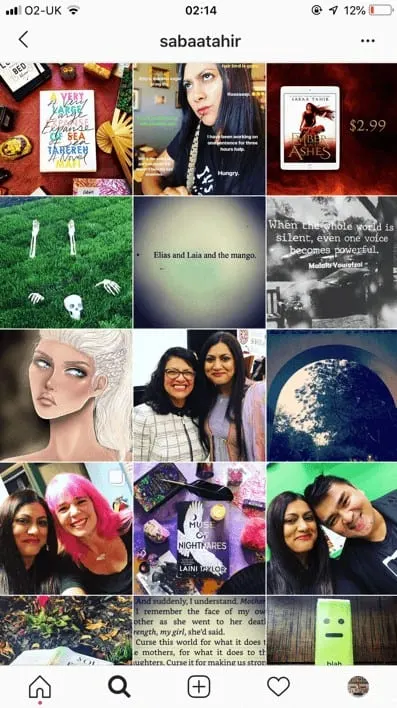
Experiment with your photography style
Now you’ve decided what sort of images you want to post, you need to actually take the pictures. One very easy photo style that I would recommend experimenting with is the “flat lay”.
This is a photo taken from above, offering a bird’s eye view of the scene in front of you on your table/bed etc.
These can be very simple, including just the book and a nice background. Or, you can create more complex compositions including other props found around the house.
These could be your stationery, your mug of tea, your laptop, your clothes – the possibilities are endless!
The best thing to do is browse some flat lay inspiration, which there is plenty of on Google Images or Pinterest!
The last step here is simply to practice, practice, practice! The only way you’re going to get good at something is if you experiment and try over and over again.
You can read all about my bookstagram journey and how I found my photo style over a number of years on whatshotblog.com.
Very simple to more complex:
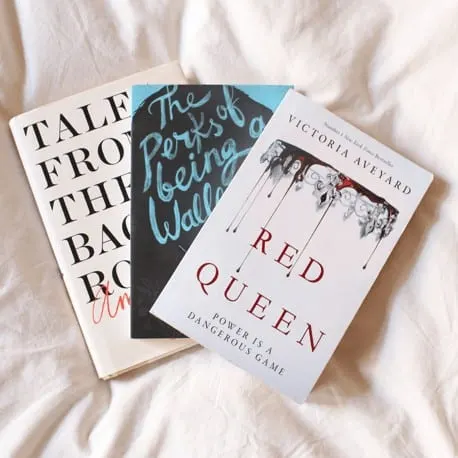
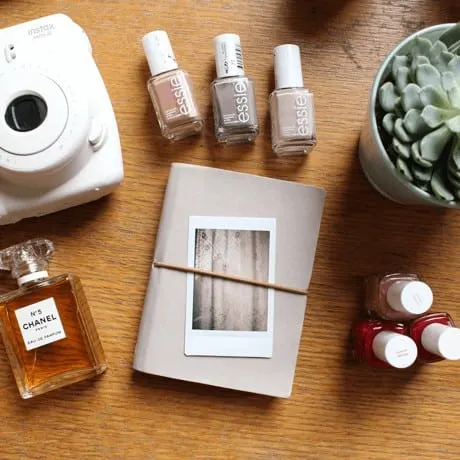
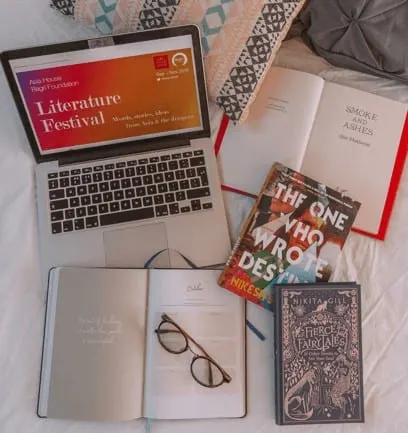
Write engaging captions
As writers, you should excel at this bit! Write engaging Instagram captions to capture your followers’ attention and get them to keep reading.
When inspiration is short, a good bookish quote will do, but if you can write a couple of lines about your photo, you’ll see better results.
An excellent way to engage your followers is to ask a question at the end of your caption, which will encourage them to leave you a comment.
Use hashtags
Hashtags were introduced in the first part of this bookstagram guide, but now you can go one step further and create your own hashtag. This is very, very simple.
Just write out your desired hashtag word and include the ‘#’ sign in front and it becomes a clickable link leading people to all other photos using the same hashtag.
I’d advise you to create a hashtag for your own book or pen name, so people can easily find you and you can easily find mention of your works by other people.
For example, if you search for the hashtags “#sarahjmaas” and “#throneofglass”, you will find lots of photos relating to the book Throne of Glass by Sarah J Maas.
Do the same with your own name and book title so every time someone posts about you, you’ll be able to see it even if they forgot to tag you!

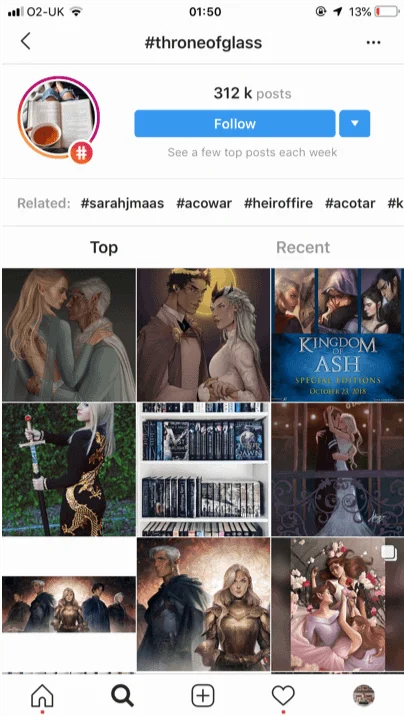
Post regularly
In order to maintain your account and keep your follower number growing, you’ll need to post regularly to Instagram. Every time you crop up on somebody’s Instagram feed you are reminding them that you exist and reminding them of your books.
People are always scrolling through Instagram and there are two kinds of posts you can create: static posts that appear on your account page forever unless manually deleted, or Instagram “stories”, which are temporary updates that will automatically disappear after 24 hours (more on this below).
Every time something important comes up in your writing or publishing process, you should share the news via Instagram.
If you have upcoming events, appearances or sales coming up then you should inform your Instagram followers about these on your main feed.
This way, even if someone comes to find your account days after you have posted, they will still have access to this information.
On the other hand, you should use Instagram stories to provide daily updates of the process behind your writing and give people a look behind the scenes. This gives you the chance to share your own life and personality here but still focus on your book in your main feed.
How to post to Instagram stories
“Instagram stories” function in much the same way as Snapchat. It is an image or video that appears when a user clicks on your account icon, but it is only available for 24 hours.
After that period of time, it automatically disappears. As such, these photos are often more “raw”, giving followers a less staged look at what you are up to.
In order to take a photo to add to your Instagram story, press the camera icon in the top left-hand corner of the Instagram feed home page. Now you can take a picture or video of whatever it is you are doing.
You can even add text to your image by pressing “Aa” in the top right-hand corner. Add some text to tell your followers what you are up to! Finally, press the ‘+’ in a circle at the bottom of the screen to post to your Instagram story.
Think of Instagram stories as a visual Twitter feed. People are constantly posting to them to show what they’re having for breakfast, what they’re reading, sharing articles they find interesting and more.
If you manage to grow your account to 10,000 followers or more, you can even add links to these stories, directing people to your website or to your book product page.
Engage with your readers
You can cultivate real reader/author relationships through regular interaction with your followers on Instagram.
Arguably you can do this on Twitter too though Instagram is for and younger audience and captions can be long-form (they are not limited to 240 characters!).
If people comment on your photos, make an effort to reply to each and every one of them.
Conversely, you need to be commenting on other people’s photos too. Leave meaningful comments on photos that interest you to create lasting relationships on Instagram.
A good place to find these photos is simply by searching through the photos using hashtag #bookstagram.
You may even find potential reviewers as you can quickly find popular bookstagrammers who talk about books of a certain genre and you can contact them directly via Instagram.
This is much easier than using Google search or blogging directories to find reviewers, which are often outdated.
Network with other writers
There are already many indie authors on Instagram so join the community and connect with other self-published authors. One way to find them is to search for hashtags such as “#authorsofinstagram” or “#authorslife”.
Once you have found an account you wish to connect with, press the big blue follow button and you’ll be kept updated with their posts. If you’d like to get even more personal, you can easily send them a private message.


Host giveaways
It couldn’t be easier to host a giveaway on Instagram and this is a great way to encourage people to follow your account and get your book out to interested readers when just starting out.
In fact, I’d go so far as to say it’s the easiest method to run a giveaway these days.
On Twitter, once your giveaway has exceeded a certain number of entrants, you can no longer see all the accounts that have retweeted or liked the post.
If you’re experiencing a high volume of entrants, then you’d have to keep checking back and noting down new entries. This can be very time-consuming if you don’t have the aid of any third-party tools.
This is not an issue on Instagram where you can simply view all the comments underneath your photo at the end of the giveaway period.
But how do people enter?
People enter giveaways by commenting the name of their friends’ accounts on your post, which sends the friends a notification leading them back to your post.
This creates a sort of chain reaction whereby that friend may comment the name of another friend, which in turn helps spread the word about books.
Be sure to be clear in your post about how people should enter, what’s up for grabs and when the giveaway ends.
Here’s an example of a giveaway that I ran with Penguin UK Books:
I have given but a brief introduction to the world of bookstagram and its uses for authors, but it should be more than clear by now that Instagram is a very powerful communication tool.
In fact, it is the most powerful social media marketing tool today for selling any product, including books. Implement both parts of this guide on how to start a book Instagram and hopefully, you’ll see increased recognition for your works and an increase in sales!
If you liked this post, check out these:
Ultimate Guide to Affiliate Marketing for Books
A Guide to Bookstagram Hashtags
It’s Time for Book Bloggers to Get Paid
Book Bloggers Share Their Thoughts on Influencer Marketing
My Bookstagram Evolution from 0 to 70k Followers
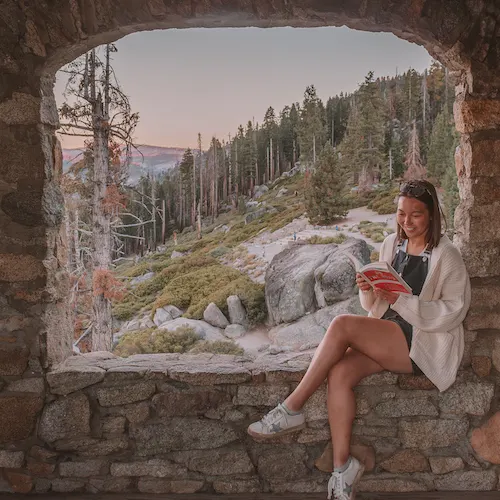
Laura
Editor of What’s Hot?

Nicola Foulds
Saturday 16th of January 2021
Just the blog post I needed to read while writing my first novel and stressing about how to get it seen. Thank you so much guiding me in the right direction, Instagram can be so daunting sometimes.
Laura
Saturday 16th of January 2021
You're welcome! Best of luck with your novel :)